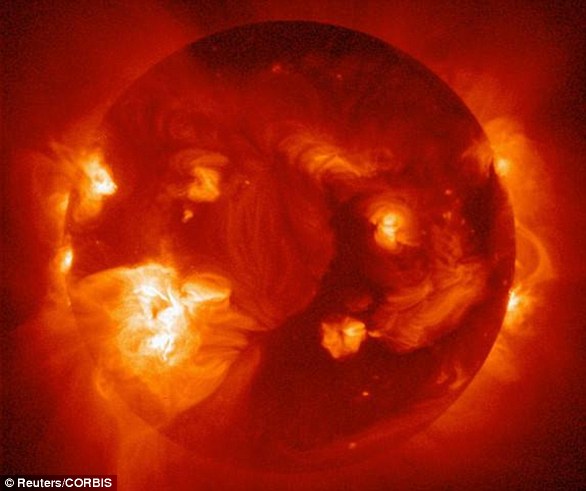Northern Lights to shine across parts of the UK TONIGHT as a huge solar storm strikes Earth: Is your area going to be illuminated as Aurora Borealis lights up the night sky?
>
Thanks to the Sun's active expulsions, skygazers will enjoy a stunning natural light show tonight – the Northern Lights.
Also known as the aurora borealis, this colorful phenomenon should be visible as far south as Dundee after dark, although you can get better the further north you go.
However, Britons as far south as Cornwall may have a chance at capturing the aurora borealis if they have a good camera and are away from light pollution.
The Northern Lights are most commonly seen in places close to the Arctic Circle such as Scandinavia and Alaska, so any sighting over the UK is a treat for skygazers.
On average, the aurora borealis can be seen in the far north of Scotland every few months, but seeing them becomes more difficult the further south you go.
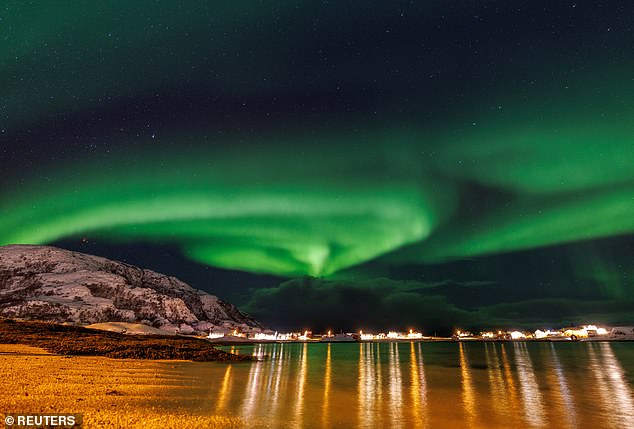
The Northern Lights are most commonly seen in places close to the Arctic Circle such as Scandinavia and Alaska, so any sighting over the UK is a treat for skygazers. Pictured is the aurora borealis as seen in Sommarø, Norway, November 19, 2023
Auroras are caused by disturbances in the Earth's magnetosphere due to strong activity on the Sun.
Tomorrow's show stems from a shower of coronal mass ejections (CMEs) — massive ejections of plasma from the Sun's corona, its outer layer.
This week, several solar coronal ejections left the Sun and traveled at hundreds of miles per second to strike the Earth's system of magnetic fields, causing auroras — but the indirect impact could disable satellites.
The best way to view the amazing displays is to find a dark place away from light pollution such as street lights and cloud-free skies.
In the Northern Hemisphere, sky watchers generally have to look north, although the stunning view can be in the sky or elsewhere.
The Met Office told MailOnline that the aurora borealis should be visible tonight with the naked eye as far south as Dundee, but people south of this with a good camera may be able to get footage of it.
A Met Office spokesman said: “Cameras help because long exposures let in large amounts of light and enhance colors beyond what the human eye can see.”
“That's why you'll sometimes see images as far south as Cornwall, even though you're unlikely to be able to see them with the naked eye that far south.
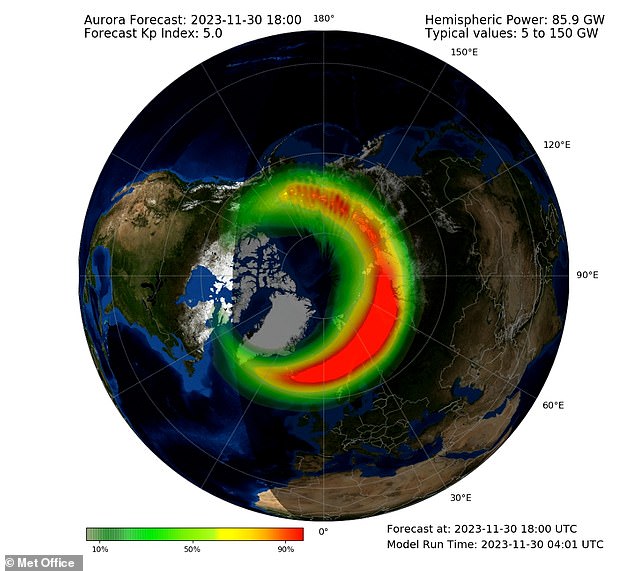
Met Office animation shows the auroral oval – the ring-like band of auroral activity that defines the extent of the northern lights and where they will be most visible
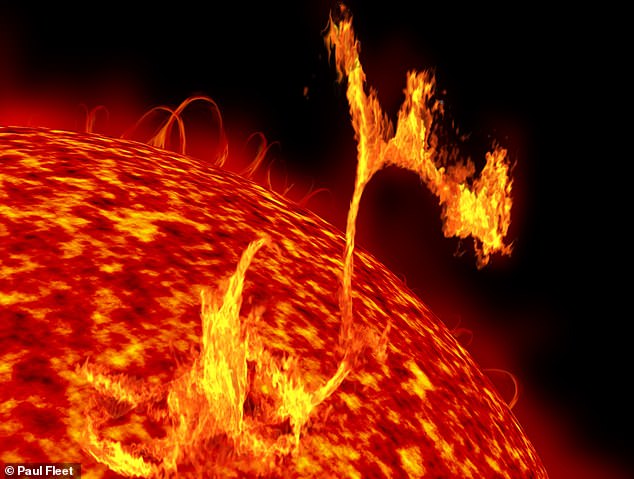
The Met Office said this week's display stems from a coronal mass ejection (CME) – a massive ejection of plasma from the Sun's corona, its outer layer (artistic depiction).
“Of course there is a much better chance of seeing anything away from urban areas because of light pollution.”
Likewise, in the Southern Hemisphere, the aurora borealis will be visible on Thursday, but the further south you are, the greater your chance of seeing it with the naked eye.
“This may give some views of the aurora borealis from southern parts of New Zealand and Tasmania, if given a clear view of the southern horizon,” the Bureau of Meteorology says.
The CME will also arrive on Friday morning (December 1) but only after dawn, so unfortunately it will be obscured by sunlight.
The aurora is expected to “decline to background levels” by Saturday, meaning there is less chance of seeing it anywhere.
The Met Office animation shows the auroral oval – the ring-like band of auroral activity that defines the extent of the Northern Lights and where they will be most visible over the next few days.
According to the US National Oceanic and Atmospheric Administration (NOAA), several coronal emissions left the Sun on Monday (November 27) but three of them were directed towards Earth.
The National Oceanic and Atmospheric Administration (NOAA) has classified Thursday's event as a “G1” (on a scale of one to five), so it is considered “minor,” while Friday's is a G2, meaning it could disrupt satellites in space and networks. Energy, including “potential widespread problems with voltage control.”
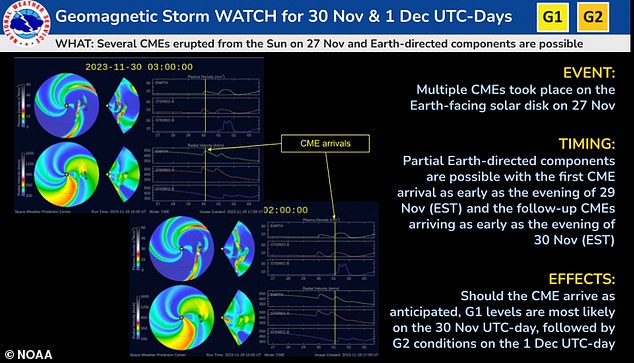
The National Oceanic and Atmospheric Administration (NOAA) said several coronal ejections left the sun on Monday (November 27) and traveled at hundreds of miles per second hitting the Earth's magnetic field system.
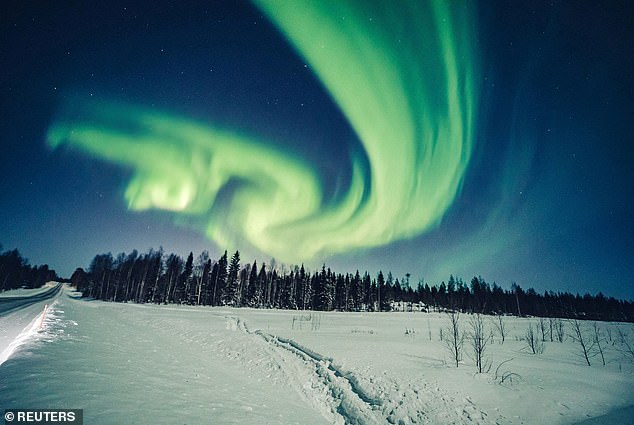
The northern and southern lights (aurora borealis) are natural light spectacles. Here, the aurora borealis appears in the sky in Rovaniemi, Finland on February 6, 2020.
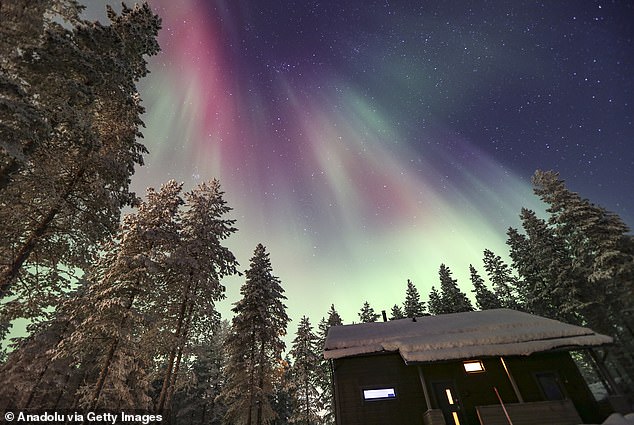
The aurora borealis have mystified humans for centuries due to their wild colors but now we know the science behind them
Auroras have mystified humans for centuries because of their wild colors, but we now know that they are created by solar activity, commonly referred to as solar storms.
CMEs are just one type of solar storm, but others include solar flares — explosions on the Sun that occur when energy stored in “twisted” magnetic fields is released.
According to Royal Museums Greenwich, most of the particles generated by these solar events are deflected, but some are trapped in the Earth's magnetic field.
They are accelerated towards the north and south poles in the atmosphere, which is why the aurora borealis are best seen near the magnetic poles.
“These particles then collide with atoms and molecules in Earth's atmosphere and essentially heat them up,” said Tom Kearse, an astronomer at the Royal Observatory.
“We call this physical process ‘excitation,’ but it is very similar to heating a gas and making it glow.”
This results in beautiful displays of light in the sky, known as aurora borealis, which come in all kinds of different colors.
Oxygen emits green and red light, while nitrogen glows blue and violet.
(Tags for translation)dailymail

